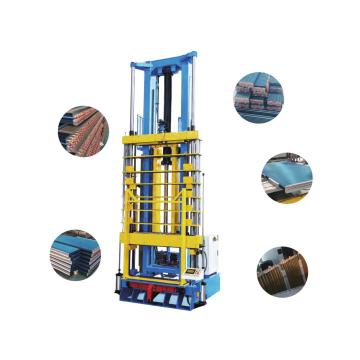
Vertical Expander
(Total 2 Products)-
Min. Order:1CNC Vertical Hairpin Tube Expander: A model of CNC precision for hairpin tube expansion jointIn the precise chain of modern industrial production, various types of equipment, with their unique performance, jointly promote the improvement of product...
-
Min. Order:1Vertical Hairpin Tube Expander-Manual Door Design: A convenient option for expanding hairpin tubesIn the manufacturing process of heat exchangers and other equipment, various types of equipment work in collaboration to jointly create high-quality...
A Vertical Expander is a specialized mechanical or hydraulic device designed to expand, stretch, or reshape materials—typically metals, plastics, or composites—along a vertical axis. It is widely used in manufacturing, construction, and recycling industries to modify material dimensions, fit components, or repurpose scrap, addressing needs where horizontal expansion tools are impractical.
Core Design & Working Principle
Unlike horizontal expanders that operate on a lateral plane, vertical expanders feature a vertical-oriented frame with adjustable jaws, pistons, or rollers. Its working mechanism depends on power source:
Mechanical Models: Use gear systems or screw drives. Users manually turn a crank or lever to lower/raise a top ram, applying controlled pressure to expand materials (e.g., widening a metal tube’s inner diameter).
Hydraulic/Pneumatic Models: Rely on fluid pressure to drive a vertical piston. This delivers higher, more consistent force—ideal for thick metals or rigid plastics—with pressure and speed adjustable via a control panel.
Most units include interchangeable jaws (flat, curved, or toothed) to match material types (e.g., smooth jaws for plastics to avoid scratching, toothed jaws for metals to grip tightly) and accommodate different sizes (common expansion range: 10mm–500mm).
Key Advantages
Vertical Precision: Operates along a vertical axis, ensuring uniform expansion without lateral shifting—critical for tasks like fitting a metal sleeve over a vertical rod or resizing a cylindrical pipe.
Force Control: Mechanical models offer fine manual control for delicate work (e.g., expanding thin plastic tubing), while hydraulic versions provide high force for heavy-duty applications (e.g., expanding steel brackets).
Space Efficiency: Vertical design takes up less floor space than horizontal alternatives, making it suitable for compact workshops or production lines with limited area.
Versatility: Works with diverse materials (metals, plastics, composites) and applications, eliminating the need for multiple specialized tools.
Typical Applications
Manufacturing: Expanding metal tubes to fit connectors in HVAC systems, resizing plastic casings for electronics, or shaping composite parts for aerospace components.
Construction: Widening steel rebar sleeves to join vertical reinforcement bars, or expanding concrete formwork to adjust slab thickness.
Recycling: Reshaping scrap metal pipes or plastic containers for repurposing, or expanding compressed metal bundles for sorting.
Automotive: Expanding brake line tubes to fit fittings, or resizing fuel line sleeves during repairs.
Operational & Safety Tips
Material Compatibility: Check the expander’s force rating against the material’s tensile strength to avoid cracking or deformation.
Jaw Selection: Use appropriate jaws—e.g., non-marring jaws for finished parts—to prevent damage.
Safety Gear: Wear gloves, safety glasses, and (for hydraulic models) ear protection to guard against material slippage or noise.
Maintenance: Lubricate moving parts weekly, inspect hydraulic hoses for leaks, and calibrate pressure settings monthly to ensure accuracy.
In summary, the vertical expander combines precision, space efficiency, and versatility, making it an indispensable tool for industries needing controlled, vertical material expansion—whether for manufacturing high-precision parts or repurposing materials in recycling.

Vertical Expander
The vertical tube expansion machine is a professional device specially designed for the boiler, condenser and refrigeration industries. It adopts a vertical structure layout and is particularly suitable for tube expansion processing in scenarios with long pipe fittings or limited space. This equipment achieves precise expansion of pipes and tube sheets through hydraulic or servo drive systems, ensuring uniform expansion force and perfect sealing performance.

